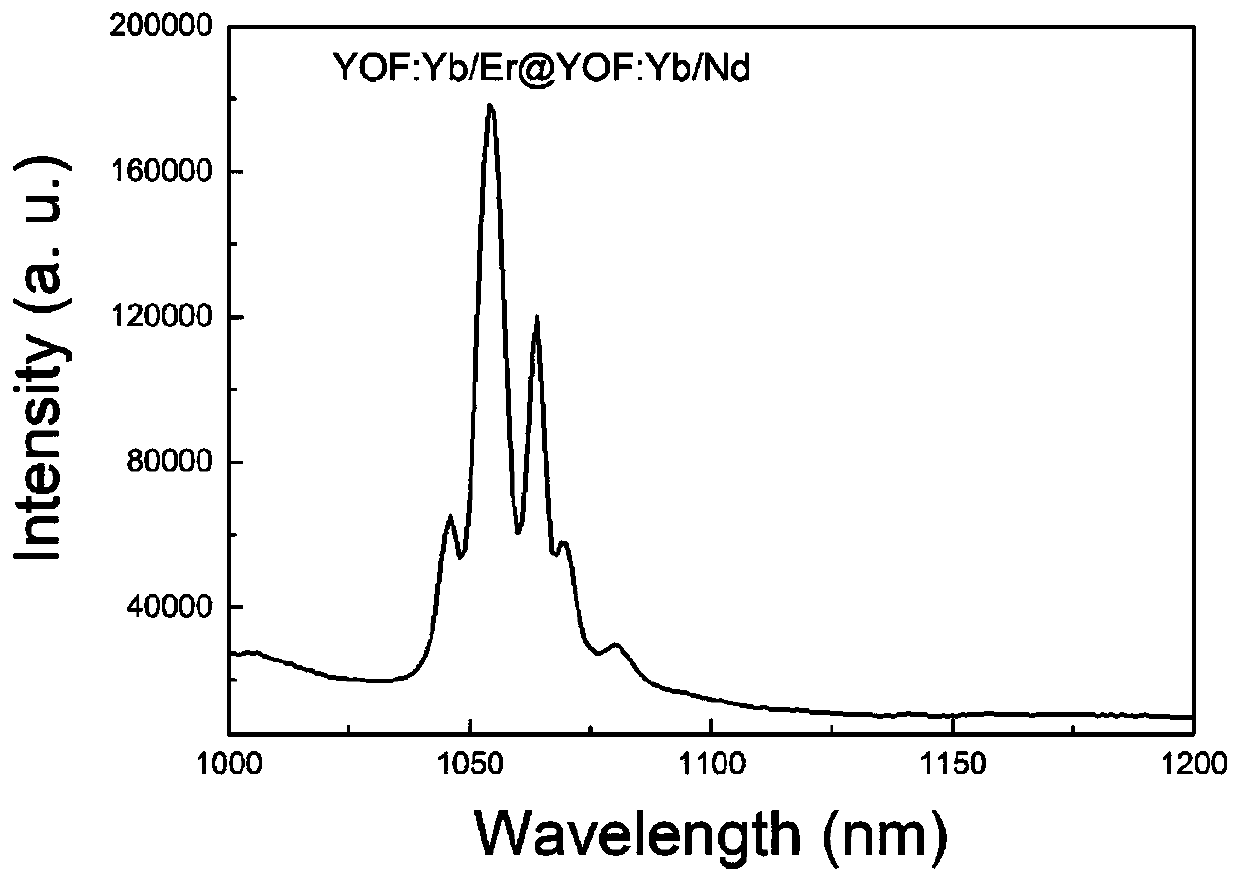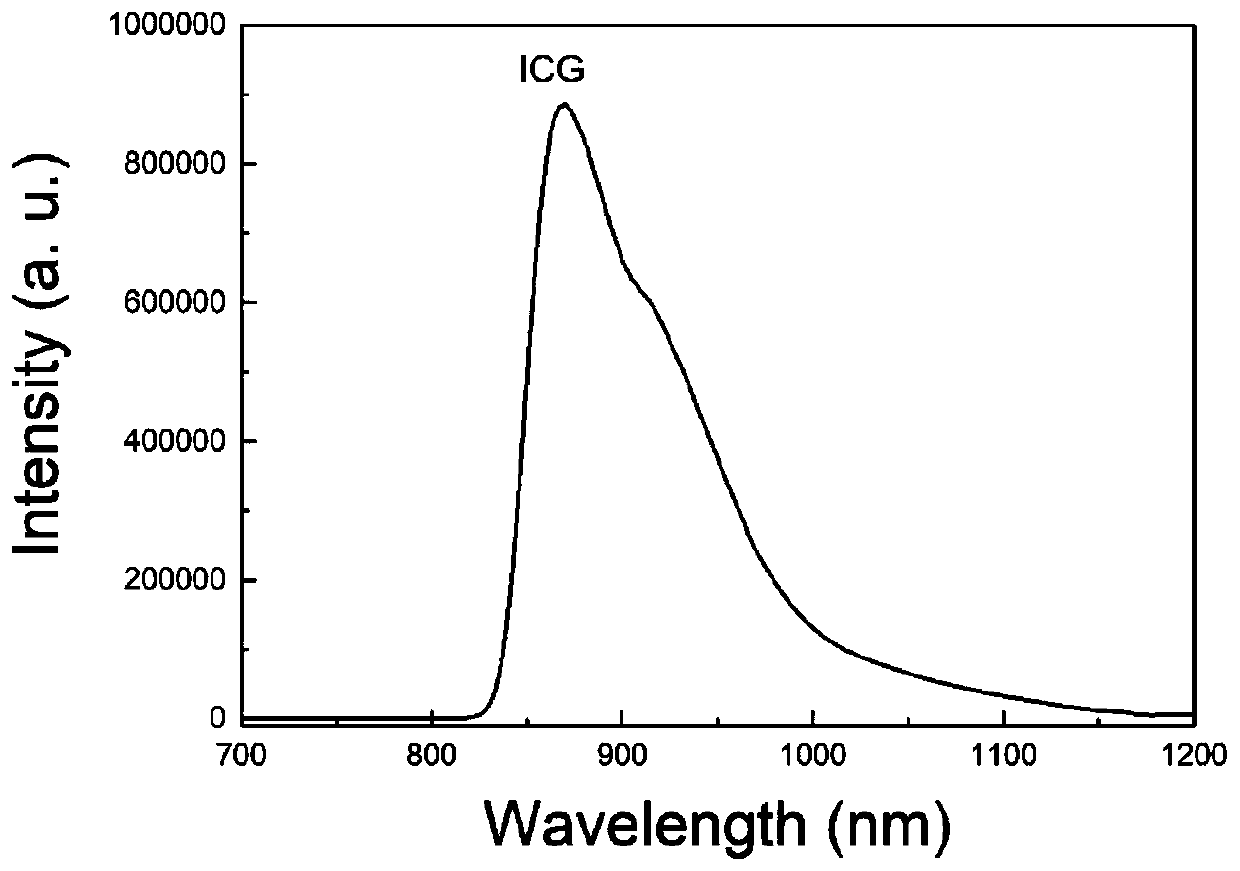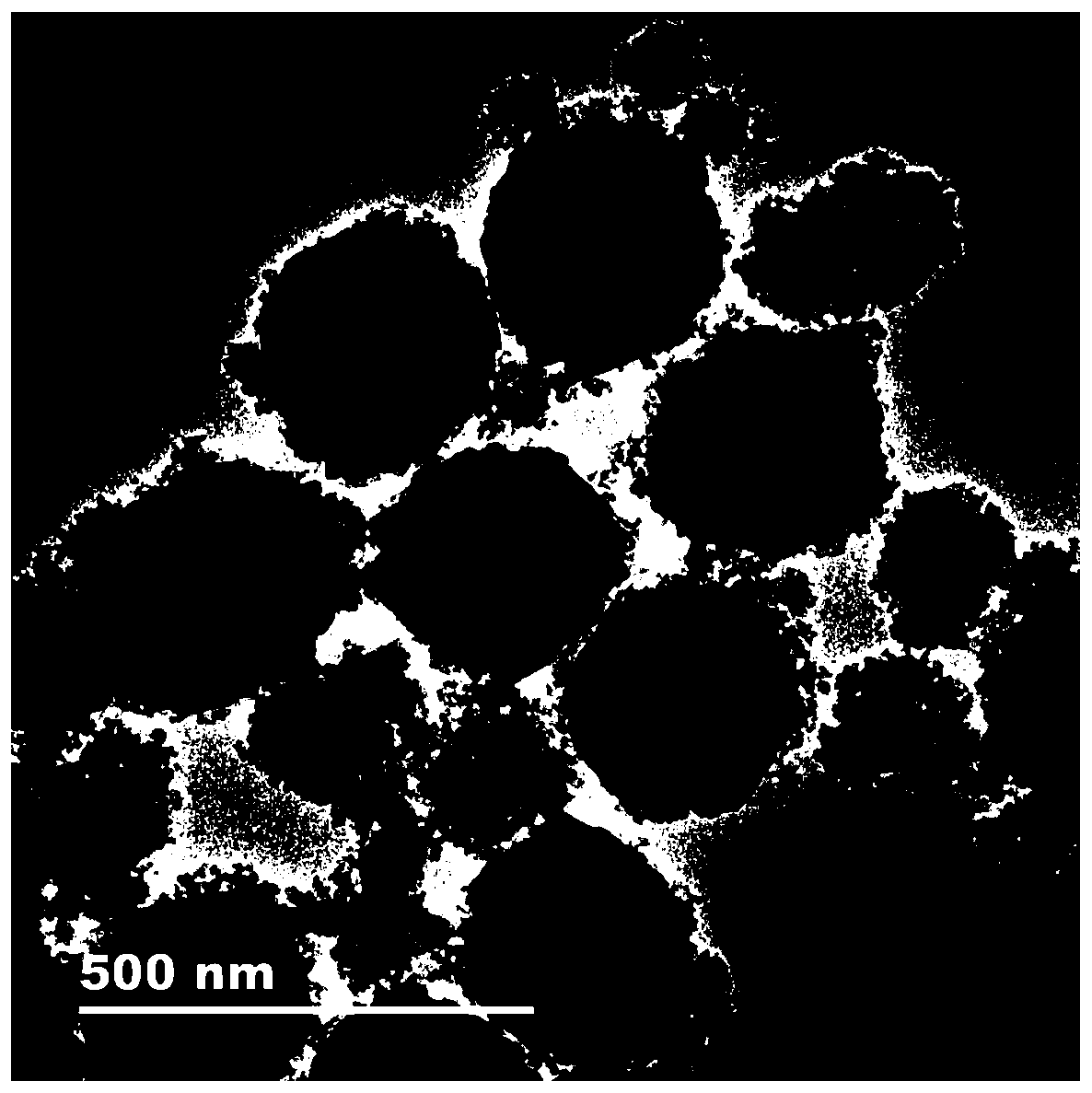Rare earth probe capable of carrying out target recognition of lung squamous cell carcinoma, and preparation method and application thereof
A technology for targeted identification and lung squamous cell carcinoma, which is applied in chemical instruments and methods, preparations for in vivo tests, pharmaceutical formulations, etc., to achieve the effects of simple and easy operation, green preparation process, and high purity
- Summary
- Abstract
- Description
- Claims
- Application Information
AI Technical Summary
Problems solved by technology
Method used
Image
Examples
Embodiment 1
[0038] This embodiment provides a rare earth probe that can target and identify squamous cell carcinoma of the lung. Coating is performed to form a core-shell structure, and its general structural formula is: ReOF:Ln@ReOF:Ln', wherein Re, Ln and Ln' are all lanthanide elements.
[0039] The rare earth probe is formed by three parts: matrix element, sensitizer and activator. The matrix elements mainly affect the appearance of the rare earth probe, but have little effect on the luminescence of the rare earth probe. The activator includes two parts: the up-conversion luminescence element and the near-infrared second-zone fluorescence imaging element; the up-conversion luminescence element is mainly used for up-conversion luminescence, so that the up-conversion luminescence is different colors; the near-infrared second-zone fluorescence imaging element is used for Elements with emission peaks in the second near-infrared region are used for fluorescence imaging in the second near-...
Embodiment 2
[0044] This embodiment provides a preparation method of a rare earth probe capable of targeting lung squamous cell carcinoma, and the rare earth probe is prepared by a co-precipitation method.
[0045] The main synthesis methods of nanomaterials are solid-phase method and liquid-phase method, among which the liquid-phase method is widely used because of its safe operation, simple equipment and relatively uniform products. The liquid-phase method includes co-precipitation method, hydrothermal / solvothermal method, sol-gel method and high-temperature pyrolysis method; among them, the product prepared by the co-precipitation method has high crystallinity, narrow particle size distribution, good dispersibility, and High output, simple and easy installation. In this example, rare earth trivalent nitrate and urea are mainly used for co-precipitation, and relatively uniform micro-nanocrystalline rare earth probes are formed after high-temperature calcination.
[0046] Specifically, t...
Embodiment 3
[0056] In this embodiment, YOF:Yb / Er@YOF:Yb / Nd is taken as an example to illustrate the preparation of rare earth probes.
[0057] First, weigh 1.5g of urea and dissolve it in 50ml of deionized water while adding 0.5mmol of Y(NO 3 ) 3 , 0.5mmol of Yb(NO 3 ) 3 and 0.5mmol of Er(NO 3 ) 3 , then add 0.1g of KF, stir until the solution is uniform, package the solution and place it in a water bath at 90°C for co-precipitation reaction, the reaction time is 3h, after the reaction, the reaction product is centrifuged and dried to obtain the nuclear precursor Body YOHCO 3 F: Yb / Er.
[0058] Then, the nuclear precursor YOHCO 3 F: Yb / Er was dissolved in 50ml deionized water and 0.5mmol of Y(NO 3 ) 3 , 0.5mmol of Yb(NO 3 ) 3 and 0.5mmol of Nd(NO 3 )3 , then add 1.5g of urea and 0.1g of KF in turn, stir until the solution is uniform, then package the solution and place it in a water bath at 90°C for coprecipitation reaction. The reaction time is 3h. After the reaction, the rea...
PUM
| Property | Measurement | Unit |
|---|---|---|
| particle diameter | aaaaa | aaaaa |
| diameter | aaaaa | aaaaa |
Abstract
Description
Claims
Application Information
 Login to View More
Login to View More - R&D
- Intellectual Property
- Life Sciences
- Materials
- Tech Scout
- Unparalleled Data Quality
- Higher Quality Content
- 60% Fewer Hallucinations
Browse by: Latest US Patents, China's latest patents, Technical Efficacy Thesaurus, Application Domain, Technology Topic, Popular Technical Reports.
© 2025 PatSnap. All rights reserved.Legal|Privacy policy|Modern Slavery Act Transparency Statement|Sitemap|About US| Contact US: help@patsnap.com



